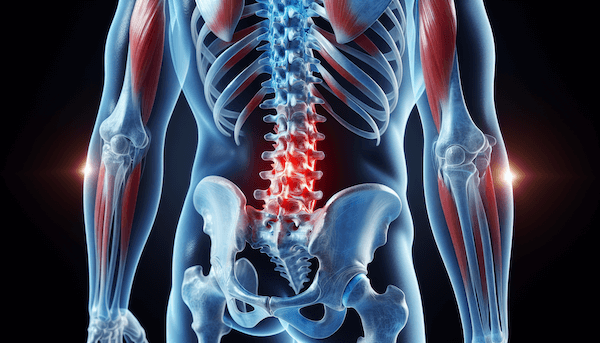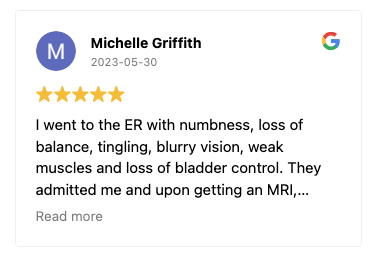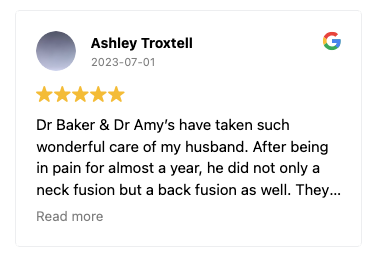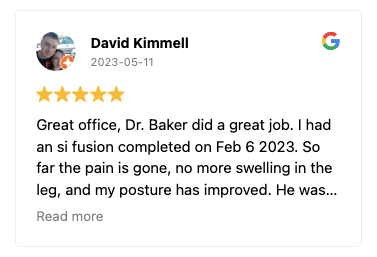Top 10 Exercises for Lower Back Pain: Stretch and Strengthen for Relief
Back pain, especially in the lower back area, has become increasingly commonplace nowadays. There may be a solution to this discomfort through exercise. Pain relief can possibly come from performing exercises specifically targeting those suffering with lower back issues, thus taking matters into your own hands!

Key Takeaways
- Lower back pain affects up to 80 percent of adults and can be alleviated through specific exercises that enhance strength, stability, and flexibility.
- Exercises like pelvic tilts, seated forward bends, and lying knee twists provide relief by engaging and strengthening core and back muscles, as well as improving flexibility in the hamstrings and hips.
- Proper technique is crucial when performing exercises for lower back pain relief to prevent injury, such as maintaining neutral spine alignment and engaging core muscles throughout the movements.
- If you are worried about your lower back pain, consult a spine surgeon in Texas like Dr Baker!
Worried about Lower Back Pain?
Request an Appointment
Understanding Lower Back Pain
It’s estimated that a staggering 80% of adults may suffer from lower back pain at some point, and so looking after our backs in terms of health management is vital.
One way to do this, which has seen great success, is the integration of stretching exercises into an everyday routine - particularly those designed for aiding strength, stability and flexibility across the body’s lower-back area as well as assisting with potential future prevention or relief of any discomfort currently experienced.

Benefits of Exercise for Lower Back Pain

Physical therapists and professionals like an injury rehabilitation specialist personal trainer often recommend exercise as a comprehensive strategy for managing lower back pain, enhancing mobility, and strengthening the muscles in that area. According to a systematic review published in the Journal of Physical Therapy Science, exercises such as glute bridges, planks, and the Bird Dog pose, can effectively strengthen muscles connected to the lower back, including the abdominal and gluteal regions.
These exercises form part of an effective spine conditioning program designed to mitigate discomfort caused by muscle strain or tension.
Furthermore, a study published in the Journal of Rehabilitation Medicine found that these workouts can aid in the prevention of back pain while alleviating existing discomfort, thus providing relief from current pain levels.
#1 Pelvic Tilts
The pelvic tilt exercise is a highly beneficial practice for individuals dealing with lower back pain.
The exercise targets and strengthens the core abdominal muscles, which play a crucial role in supporting the lower back.
It also activates the glutes and hamstrings, two key muscle groups that assist in maintaining proper posture and alignment, thus helping to reduce lower back discomfort.
By regularly performing the pelvic tilt, you can enhance your core stability, improve your posture, and potentially alleviate lower back ache. It's a simple yet effective way to take proactive steps towards managing your lower back health.
#2 Supine Hamstring Stretch
The supine hamstring stretch is a beneficial exercise for reducing lower back pain. This exercise specifically targets the hamstring muscles, which run along the back of your thigh from your hip to your knee.
These muscles play a crucial role in hip extension and knee flexion, movements that are integral to many daily activities like walking and running.
When the hamstring muscles are tight, they can pull on the pelvis, tilting it backwards.
This posterior tilt can increase the strain on your lower back and spine, leading to discomfort or pain. It can also contribute to an increased load on the intervertebral discs, the cushion-like pads between the bones of your spine.
Over time, this increased pressure can lead to disc degeneration or herniation, both of which can cause lower back pain.
By performing the supine hamstring stretch, you're working to alleviate this tension in the hamstring muscles.
The mechanics of this exercise involve lying flat with your legs outstretched and bending one knee toward your chest while holding onto a towel or strap around that foot's ankle area.
Keep the other leg level against the floor, then gently pull on the material until it brings you closer to your torso region (30-60 second hold for optimal results).
This stretch helps to lengthen the hamstring muscles, reducing their pull on the pelvis and subsequently decreasing the strain on your lower back and spine.
Regularly performing this exercise can help maintain an even balance of flexibility and tension in these muscles, which can help prevent and alleviate lower back soreness associated with such movements. In the long run, this can lead to a healthier, more resilient lower back and spine.
#3 Seated Forward Bend
This exercise involves slowly hinging forward from the hip joints while reaching towards your feet.
Throughout the movement, maintain a straight spine.
Be consistently aware of your own capabilities to avoid any possible strain.
With practice, you'll familiarize yourself with the proper ways to incorporate this into future training regimens.
As you become more comfortable with the exercise, you can gradually increase the difficulty level to achieve your set goals and objectives.
Always remember to seek professional medical advice relevant to your individual needs before implementing this or any other exercise into your routine.
#4 Lying Knee Twist
To benefit from stretching and the mobilization of muscles and joints in the lower back, hips, legs, with a bent position to help relieve pain one may practice this exercise, lying knee twist.
Begin by positioning yourself on your back keeping both knees slightly bent but feet firmly flat on the ground alongside extending arms out for stability.
Now gently roll both knees either side while paying close attention that shoulders remain laid completely flat onto floor before returning them into center then slowly lift up hips off the same surface rolling towards opposite direction afterwards.
As always, make sure you are not injured prior to engaging in any such activity, and remain aware of possible feeling pains occurring during stretch or misalignment of leg throughout the process altogether.
#5 Bird Dog
The bird dog exercise is a great way to provide relief from lower back pain.
It helps strengthen the core muscles, which are important for posture and balance.
To perform this workout correctly: assume a hands-and-knees position with your wrists in line below your shoulders.
Stretch out one arm as you extend the opposing leg so that there’s an unbroken straight line between hand and foot.
Maintain it for some time before gently returning to the starting point again.
Not only can this help prevent any agony due to lower back pain, but also enhance good posture and support of the spine, reducing the risk of injury or ache altogether.
#6 Modified Plank
The modified plank exercise is effective in fortifying the lower back muscles and strengthening the spine, reducing the chance of discomfort or damage.
To perform this strength movement correctly one must start out on their front with both elbows and toes flat to the ground.
It’s important that abdominal muscles be engaged by drawing your navel towards your spinal cord while ensuring a straight line from head to feet at all times.
Over-arching should strictly be avoided for optimal safety as well as results.
Strengthening these particular core muscles goes a long way toward shielding them from harm, making it an ideal work out activity overall!
#7 Cat-Cow Stretch
The cat-cow stretch is an invigorating workout that helps to extend the chest, shoulders and neck as well as energize the spine.
To do this exercise correctly, get into a hands and knees position with hips below knees while your wrists are under your shoulder blades.
Inhale deeply in order for you to achieve cow pose by arching your back then exhale whilst rounding it off like a cat’s when doing so, repeat several times or depending on personal preference.
Safety first: You must remember not to hunch over those shoulders of yours.
Don’t make abrupt motions nor strain yourself during neck movements, use mainly just the torso muscles instead plus engage core strength at all times during stretching sessions – quit immediately if any discomfort occurs.
#8 Glute Bridges
Assuming a lying position with knees bent and feet firmly planted on the floor, you can engage in an exercise that targets and strengthens key muscles in your lower back, potentially improving posture and minimizing discomfort in this area. Here, the focus is on engaging the core and gluteal muscles.
The core muscles, including the abdominal and lower back muscles, are responsible for maintaining the stability and alignment of the spine. When these muscles are strong and engaged, they can effectively reduce the strain on the intervertebral discs - the small, cushion-like pads that act as shock absorbers between each vertebra in the spine. This can help prevent conditions such as disc degeneration or herniation, which are common causes of lower back pain.
Simultaneously, squeezing the gluteal muscles helps to lift the hips upwards, forming a straight line from your heels all the way through to your shoulders. This action not only strengthens these muscles but also helps to realign the spine, further reducing strain on the intervertebral discs. The gluteal muscles also play a crucial role in supporting the lower back and maintaining proper posture, which can further alleviate lower back pain.
By consistently engaging these muscles and performing this exercise, you can potentially minimize any discomfort felt around the knee-joints or related areas, and improve overall lower back health.
#9 Dead Bug
Doing the dead bug exercise helps with pain in your lower back by strengthening core muscles, such as abdominal muscles, which play an essential role to secure the spine. To carry out this exercise correctly, you need to:
- Lay flat on a mat or floor.
- Bend knees and lift legs up so that they’re above hips making a 90 degree angle..
- Stretch arms upright pointing towards ceiling at right angles from body frame. Keep lumbar region firmly planted against ground for balance while performing moves. 4) Slowly decrease arm on left side and leg of right - continually engaging central area + pushing down low back for security.
It is very important not to mistake it with bicycle crunch nor perform movements too hastily. Keeping head, neck & spinal cord in their original alignment rather than arching/flattening back excessively as these things can hurtful strain upon spine.
#10 Sphinx Stretch
For individuals dealing with lower back pain, the Sphinx stretch offers a number of advantages.
Through this pose one can strengthen their lower back muscles and relax any cramped areas around their spine.
When executing the exercise on a yoga mat, ensure to place your pubic bone down towards the ground while keeping legs pressed securely together and engaging both thighs and core to shield your spinal column.
To enter into position, lift up through top of head, pressing shoulder blades closer toward each other in unison, while making sure not to do overarch backwards excessively or utilize incorrect hand placements by locking elbows too strongly, resulting in crunching at base region amongst others mistakes that might cause discomfort if continuing against better judgement.
Keeping active involvement within abdominal area is essential as well as ensuring smooth movements are performed without sudden stops should anything unpleasant be felt within muscle groups involved during stretch process, which must then get brought immediately under control before continuing.
Summary
Lower back pain can be a difficult condition to cope with, but the right exercises (including stretching and strength training) could help reduce discomfort, enhance mobility, and provide the necessary relief from lower back issues. Stretching exercises combined with additional routines geared towards increasing your strength will greatly improve symptoms associated with persistent or severe lower back pain.
Frquently Asked Questions about Exercises for Lower Back Pain
Exercises such as knee to chest, lower back rotation, pelvic tilts and extensions can be beneficial in relieving lower back pain. Foam rolling and child’s pose help stretch the muscles while cat/cow is great for strengthening them. All of these exercises are effective at reducing discomfort caused by this type of issue.
Dr. Abdul Baker - An Expert Neurosurgeon in Texas
Every neurosurgery has its complications; thus, a patient must choose the best neurosurgeon for himself. Dr. Abdul Baker is one of the most experienced and qualified neurosurgeons in Texas, treating patients for more than 16 years. People in Sherman, Plano, and nearby areas trust him for every kind of neurosurgery due to his surgical procedures’ 100% success rate. You may visit him if you need any consultancy or treatment regarding your brain and spine disorders.


Dr. Baker specializes in neurosurgery, neurosurgical spine surgery, neurotrauma, brain tumors, spinal tumors, and peripheral nerve damage treatment.









